


Vocabulary




Vocabulary

Shapes!

square
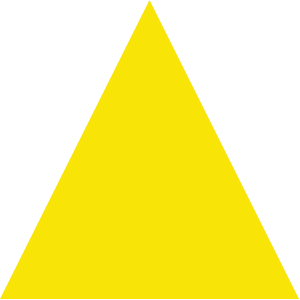
triangle

circle

heart

oval

hexagon

star

rectangle
Colors!

red

orange

yellow

green

blue

purple

pink

brown

black

gray
Numbers!
1
2
3
4
5
6
7
8
9
10
11
12
13
14
15
16
17
18
19
20

Numbers 1-10 ^66
A guide for Haitian Creole Learners
Contents
INTRODUCTION
Cardinal Number
Number in Haitian Creole
Digits : Chif
Number 0 – 10
Number: Nonm
Number: One
Number 11 – 19
Number : Nimewo
Number 20 – 100
Number Words
Conclusion
PLACE VALUE
Tens: Dizèn
A Closer Look
The Numbers in Between Tens
Hundres: Santèn
The Numbers in Between Hundreds
Number 100 – 900
Thousand and Million
Number 1000 – 10000
Place Value Chart
A closer Look at The place value chart
Diagram of the Place value Chart
Detail representation of the place value Chart
PLACE VALUE CHART
A closer Look at The place value chart
Diagram of the Place value Chart
Detail representation of the place value Chart
BIG AND SMALL NUMBERS
COUNTING
Counting to 10
Counting to 20
Counting to 30
Counting to 40
Counting to 50
Counting to 60
Counting to 70
Counting to 80
Counting to 90
Counting to 100
Review
Long Scale System
Large Number Gran Nonm
Small Number Ti Nonm
Ordinal Numbers In Haitian Creole
Rule 1
Rule 2
Rule 3
Rule 4
Rule 5
Rule 6
Rule 7
Rule 8
Rule 9
Rule 10
Rule 101
Ordinal Number Nonm Òdinal
FAQ KMM
Difference Between Cardinal and Ordinal Numbers
How to Write Dates with Ordinal Numbers
Using Odinal number
Is Zero an Ordinal Numbers ?
How dou you say first In Haitian Creole
How dou you say Last ?
WHAT IS NUMBER
What is a Numbers ?
To Count Pou Konte
To Measure Pou Mezire
To Label Pou Mete Etikè
Positive Numbers? Nonm Pozitig
Positive Numbers ? Nonm Pozitig
Types of Numbers ?
Imaginary Numbers ?
Why Learn Haitian Creole Numbers ? Pouki N Dwe Aprann NOnm an Kreyòl

Introduction

Numbers are like the secret code to understanding the world around us, helping us quantify, order, and describe everything from the objects we count to the ages we discuss. Whether you’re counting stars in the sky or racing against the clock, mastering numbers is your ticket to clear, confident communication. By the end of this lesson, you’ll feel ready to wield the power of numbers in Haitian Creole with flair and precision, unlocking endless possibilities for expressing yourself effectively. So, let’s dive in and get counting!
Cardinal Number
Now that we’ve got the basics down, let’s dive deeper into the world of numbers and explore the realm of cardinal numbers.
What are they?
Cardinal numbers or Nonm Kadinal are like the storytellers of quantity, telling us ‘how many’ or “konbyen” of something there are. Ready to discover how we can master these in Haitian Creole?
Buckle up, because we’re about to add a whole new layer to our numerical adventure.
Cardinal numbers are the party animals of the math world—they tell you how many people showed up to the party! Unlike their orderly cousins, the ordinal numbers, who are all about who came first, second, or third (so competitive!), cardinal numbers just want to count everything in sight. They’re the reason you know you ate three slices of pizza instead of just “some” slices, and why you can brag about having exactly 22 Oslè 💬, not “a lot” of them.
In essence, if you ever need to know “konbyen,” ( how many) call on “Nonm Kadinal” a cardinal number. They’re always ready to count, no invitation necessary!
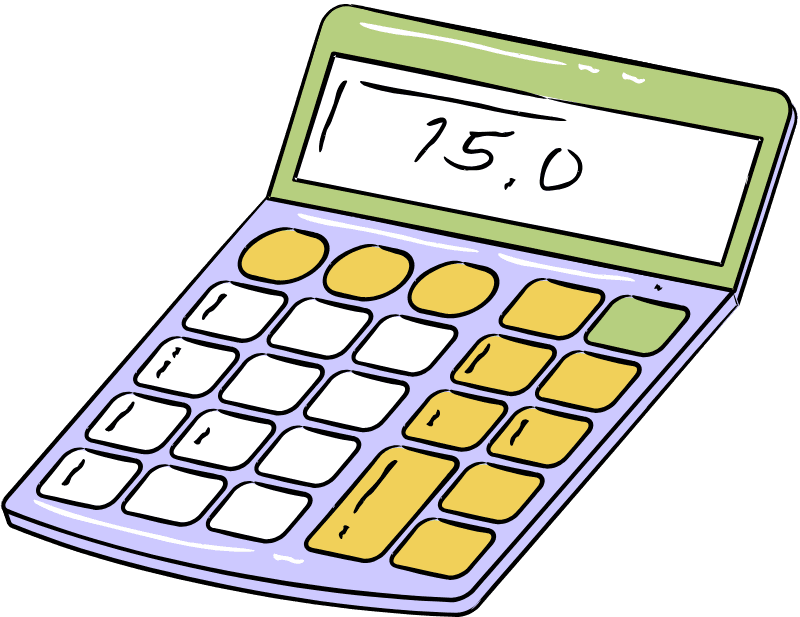
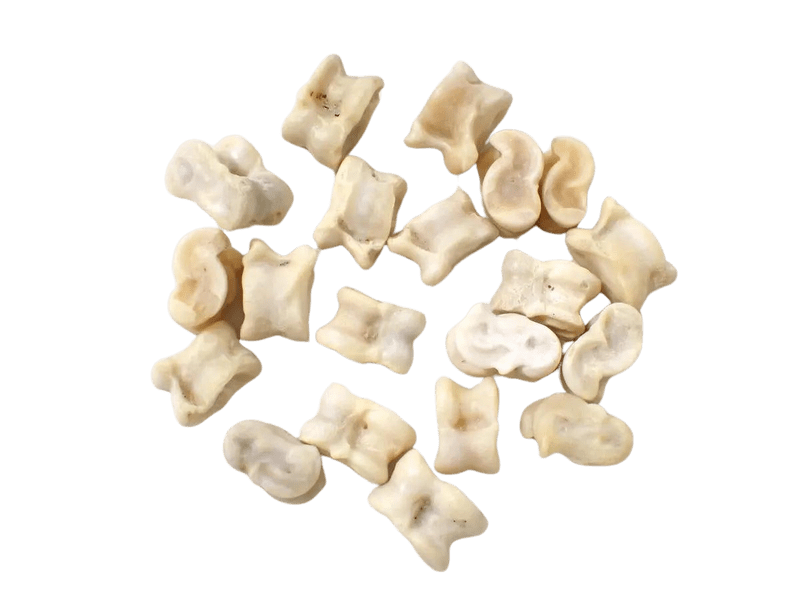
Numbers In haitian Creole

Before diving into the colorful world of counting in Haitian Creole, you’ll need three special keys: “chif,” “nonm,” and “nimewo.” These aren’t just words; they’re your first steps on a journey through the vibrant landscape of Haitian Creole numeracy, where every number tells a story.
Digits : Chif
Imagine walking into a party in Haiti and you see a group of (9) nine cool digits hanging out, sipping on mango juice. Those are your “chif,” the life of the party from 0 to 9, grooving to their own beat.








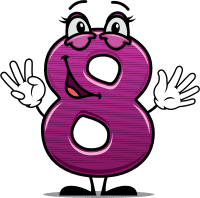


Numbers 0- 10
0: Zewa
1: en
2: de
3: Twa
4: Kat
5: Senk
6: Sèt
7: Zewa
8: uit
9: Nèf
10: Dis

Number : Nonm
But when the clock strikes ten, the scene changes. Enter “nonm,” the crowd that’s too cool for single digits, strutting in with their double digits and beyond, ready to turn the party up a notch.
And just for a twist, when you’re checking out the monthly stats, those “chif (mwa yo )” are not just any numbers. They’re the gossip of the month, spilling the tea on how well (or not) everything’s been going. So, whether you’re partying with digits in Haiti, sipping ‘dlo kokoye’ coconut water with chif in Haitian Creole, or flipping through the latest stats, remember, numbers have their own personalities and stories, no matter where you are!




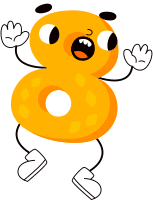

Number One

Nimewo 1
Haitian Creole has a unique way of using the number one, which can be expressed in three different forms: “en”, ‘youn’, and ‘yon’. Each form is used in specific contexts, adding a layer of nuance to the language.
En – one
When referring to positions or sequences, such as an address, ID card, or number in a list, use ‘en’.
For example:
– Adrès kay mwen kòmanse ak nimewo en.
(My home address starts with a 1.)
– Ki nimewo kat ou?
(What is your card number?)
– Li kòmanse pa en.
(It starts with a one.)
Youn -One
When directly answering a question where “one” is the response, use ‘youn’:
– Konbyen mango ou vle?
(How many mangoes do you want?)
– Mwen vle youn. (I want one.)
– Ban mwen youn.
(Give me one.)
Yon-One
In complete sentences where “one” describes a noun, use “yon”:
– Konbyen galon dlo ou te pote?
(How many gallons of water did you bring?)
– Mwen te pote yon galon dlo.
(I brought one gallon of water.)
– Konbyen timoun ki pran vakans?
(How many children are on vacation?)
– Yon timoun pran vakans.
(One child is on vacation.)
-Mwen gen yon dola.
(I have one dollard)
These distinctions help clarify and enrich communication in Haitian Creole, ensuring precision and clarity in various situations.
Check out the indeinte articles yon.
Numbers 11- 19

11: Onz
12: Douz
13: Très
14: Katòz
15: Kenz
16: Sèz
17: Dis- sèt
18: Dis- uit
19: Dis- nèf
Number : Nimewo

Imagine “nimewo” as the universal language of numbers, where every digit has its own superhero identity, fighting the good fight to keep the world organized and quantified.
Now, picture number seven as the mystical superhero of this bunch. While numbers like one, two, and three are busy counting apples or lining up to determine who’s first in line for a concert, seven is off in the shadows, cloaked in a cape of mystery, dabbling in magic tricks and whispering secrets of ‘chans’ luck and enchantment.
It’s like the numbers are throwing a never-ending party, and seven is that intriguing guest who everyone suspects has magical powers. Whether counting stars or finding your place in the universe, “nimewo” invites you on an adventure where digits come to life, and seven is your guide to the mystical side of the math world.



Numbers 20- 100
20: Ven
30: Ven e en
40: karant
50: senkant
60: Swasant
70: Swasann- dis
80: Katre- ven
90: Krate- ven- dis
100: san

Number Words
Here’s a more engaging way to put it:
1.Ban nimewo telefòn ou .
Give me your phone number.
2. Konbyen shift ki nan nimewo telefò nan.
How many digits is in your phone number?
3. Nimewo telefòn nan gen 10 chif:
509 (445. 2223.)
4. The phone number has ten digits.
509- 445 -2223.
5. 509 se premye nonm yo.
509 are the first numbers.
6. Ou konn nimewo kay mwen ?
Do you know my house’s address?


Conclusion
In the vibrant world of numbers, “chif,” “nonm,” and “nimewo” each play a unique role in the tapestry of counting and quantifying. “Chif ” introduces us to the fundamental digits, the building blocks of all numbers. “Nonm” expands our horizons, guiding us into the realm of greater quantities and complexities beyond the basic ten.
Meanwhile, “nimewo” weaves these concepts together, presenting numbers as the universal language of measurement, order, and even a touch of magic.
Together, “ chif, nimewo, ak nonm ” create a full spectrum of numerical understanding, from the simple joy of counting to the profound mysteries symbolized by numbers like the enchanting seven
Place Value

The Place Value Chart is in Haitian creole “ Tablo Valè Pozisynèl, is like a magical table that reveals the hidden power of each “chif” digit based on where it sits in a “nonm” number. As you glide to the left, each digit’s value multiplies by ten, becoming mightier with every step!
But beware—venture to the right, and that value shrinks by a factor of ten each time. It’s a numerical adventure!
Pattern Change

In Haitian Creole, some numbers like to play dress-up and change their outfits depending on the company they keep. It’s as if they’re attending a fancy masquerade ball and decide to switch their names slightly to match the occasion—especially when they’re around certain vowels or consonants. It’s quite the linguistic party!
For instance, when they hang out with specific letters, the “Ts” get shy and transform into “Ns”:
– Ui shows up instead of Uit (eight).
– ‘Ne’ steps in for Nèf (nine).
– ‘Di’ takes the stage instead of Dis (ten).
– ‘Si’ sneaks in place of Sis (six).
– ‘Venn’ winks instead of Ven (twenty).
Even Karann prefers not to be Karant when it feels like it.
So, imagine you’re at a big social event—like a party with 6,000 people, or should I say, **si mil moun**? Or at a sale featuring **venn sis** discounts—oops, I meant twenty-six (**venn sis**)!
Keep your ears perked and your humor ready. Paying attention to these playful changes will not only make learning Haitian Creole more enjoyable but will also ensure you don’t miss out on the fun nuances of the language. So, lace up your dancing shoes, and let’s mambo through the numbers!
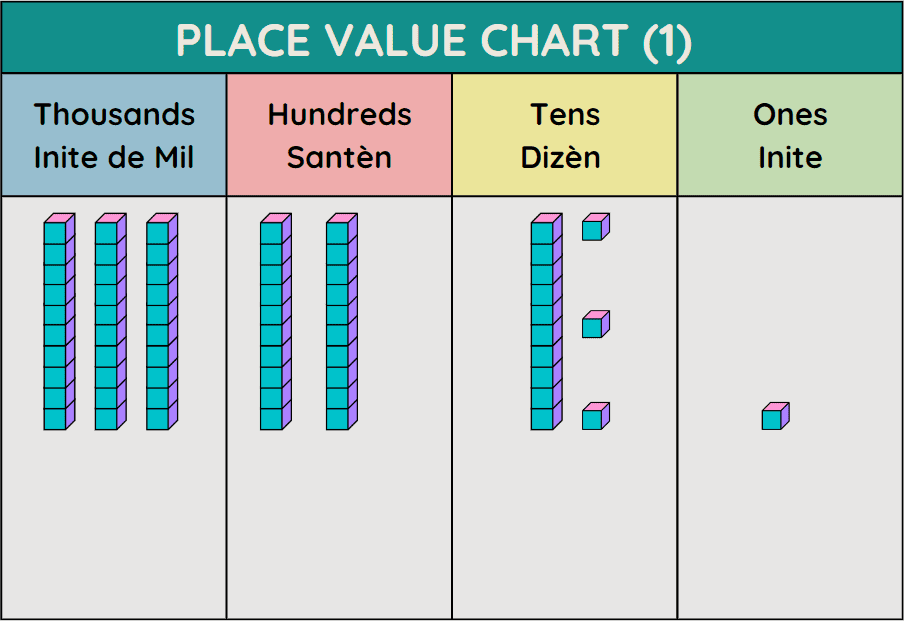
Tens : Dizèn
Tens : dizèn
Tens or “ Dizèn” in haitian creole are numbers that are divisible by ten (20, 30, 40, 50, 60, 70, 80, 90 ). When the number en (1) follows a ten, we connect them using ‘e’ wiht in English means “and”.
The Number in Between “dizèn”
Here’s the magic trick for crafting all the numbers in between: just mix and match with the formula! It’s as simple as Tens Number plus a digit from 0 to 9, and presto, you’ve got yourself a number! Let’s start creating!”
🚨 Note: Do not use hyphens in these cases.
21 – ven e en
31- Trant e en
41– Karant e en
51 – senkant e en
61- swasant e en
A Closer Look

Tens : Dizèn
Tens or “ Dizèn ” in haitian creole are numbers that are divisible by ten (20, 30, 40, 50, 60, 70, 80, 90 ). When the number en (1) follows a ten, we connect them using ‘e’ witt in English means “and”.
🚨The numbers 81 and 91 are exceptions.
Here, we use hyphens instead of “e” to connect them.
81 – katre – ven – en
91 – katre- ven – onz
When the number “en, 1” follows a hundred, we do not use “e” or an hyphens.
101 – san en
601 – sis san en
🚨 Be careful with the following numbers. Their form can be tricky for English speakers.
71 – Swasann- onz .
Long ago Haitian used to say “swasant – e- onz” now we simply say Swasann onz.
72 – swasant- douz
73 – swasant- trèz
74 – swasant- katòz
75 – swasant- kenz
76 – swasant- dis- sèz
77 – swan sang- dis- sèt
78 – swasant-dis- uit
79 – swasant-dis-nèf
91 – katre-ven
92 – katre-ven-douz
93 – katre-ven-twèz
94 – katre- ven- katòz
95 – katre- ven – kenz
96 – katre- ven- sèz
97 – katre- ven- dis- sèt
98 – katre- ven- dis- uit
99 – katre- ven- dis- nèf
vocabulary
hyphen : ti rè
The numbers in between
Here’s the magic trick for crafting all the numbers in between: just mix and match with the formula! It’s as simple as Tens Number plus a digit from 0 to 9, and presto, you’ve got yourself a number! Let’s start creating!
43: karann – twa
36: Trant – senk
25: Venn – senk

Hundreds : Santèn

Hundreds or “Santèn ” in haitian creole are numbers divisible by one hundred (200, 300, 400, 500, 600, 700, 800, 900 ). They are written without a dash between the numbers.
Exemple :
100 – san
200- de san
300 – twa san
400- kat san
500- sen san
600- sis san
700- sèt san
800- ui san
900 – nèf san
304 – twa san kat
The Number in Between “ Santèn”
Ready to create any number between hundreds? Just follow this simple recipe: grab your Hundreds Number, add a dash of Tens Number, and top it off with any digit from 0 to 9. Voilà, you’re a number chef now!
The numbers in between
Ready to create any number between hundreds? Just follow this simple recipe: grab your Hundreds Number, add a dash of Tens Number, and top it off with any digit from 0 to 9. Voilà, you’re a number chef now!
143: San karann – twa
368: twa san swasant – uit
975: nèf san swasant- kenz

Numbers 100- 1000

100: one hundred
200: two hundred
300: three hundred
400: four hundred
500: five hundred
600: six hundred
700: seven hundred
800: eight hundred
900: nine hundred
1000: one thousand

Thousands and Millions
Mil ak Milyon
After “ mil ak milyon, ” never put the plural yo to indicate plurality. By simply mentioning thousand, and million it is understood that it is a very large number. Therefore there is no need to indicate plurality, again that would be redundant.
1 000 – mil
2 000 – de mil
3 000 – twa mil
4 000 – kat mil
5 000 – senk mil
6 000 – si mil
7000- sèt mil
8000 – ui mil
9000 – nèf mil
The Number in Between
If you want to whip up any number in the thousands range, it’s easy as pie! Just follow this recipe: start with the Thousand Number, stir in a Hundreds Number, add a sprinkle of Tens Number, and finish with a dash of any digit from 0 to 9. Voilà, you’ve got your very own thousand!”
Numbers 1000- 9000

1000: mil
2000: de mil
3000: twa mil
4000: Kat mil
5000: senk mil
6000: si mil
7000: sèt mil
8000: ui mil
9000: nèf mil
10,000: Di mil
Place Value Chart (2)
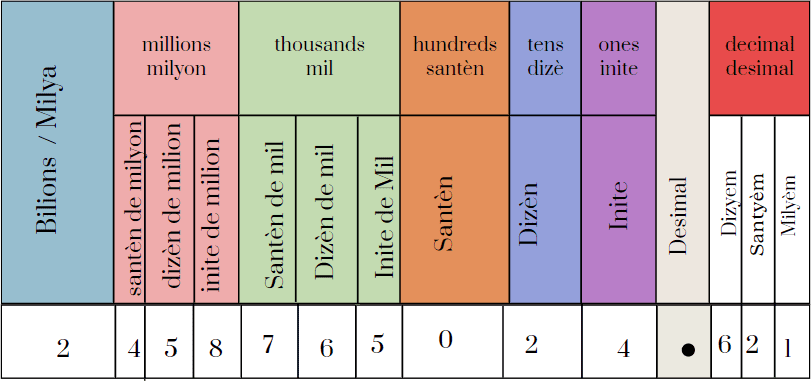
2 458 765 024 . 621
De bilya kat San senkant-ui milyon, sèt san swasann-senk mil, venn-kat pwen sis san ven e en.
Two billion, four hundred fifty-eight million, seven hundred sixty-five thousand, twenty-four point six two one.
A Closer LOOK

Place Value Numeration
Ran Sistèm Nimerasyon
Here’s the secret sauce behind our number system: it’s all about the powers of 10 “pisans dis” ! When you write ‘2 364,’ you’re really saying 2 Thousands ( 2 mil) + 3 Hundreds ( 3 sans) + 6 Tens ( 6 dis ) + 4 Ones ( 4 en), creating a neat little sum. The Ones start on the right, and each place to the left cranks up the p.ower of 10. So we have 2 in the Thousands unit, 3 in the Hundreds, 6 in the Tens, and 4 in the Ones. But to keep things simple, we drop the unit names and just write 2 364!
After the Ones, each place is the next power of 10, giving us the awesome system of place value, or positional numeration. It’s like a fun math dance where each digit knows exactly where it belongs!
In math, the face value of a digit is simply the value it represents by itself, regardless of its position in a number. For example, in the number 482, the face value of the digit 8 is just 8. It’s a straightforward concept: the face value is the digit itself, unlike the place value which considers its position to determine its actual worth in the number.
Number Big and Small
The Number after the Decimal:
In Haitian Creole, the number following the decimal point “621’ is referred to as a ‘Pwèlyèm’, which translates to ‘negligible’ in English.
Therefore 2 458 765 024 . 621 would read as:
De bilya kat San senkant-ui milyon, sèt san swasann-senk mil, venn-kat ak yon pwèlyèm.💬
Two billion, four hundred fifty-eight million, seven hundred sixty-five thousand, twenty-four, and a smidgin .
Money
In the context of money, the amount after the decimal point is referred to as a “ke” in Haitian Creole, which translates to “change” in English.
For example
$5.30 would be said as “senk dola ak yon ke
or five dollars and change” in English.
In this context, “and change” means that five dollars plus some additional amount of money less than one dollar was given. This typically refers to the coins given along with the main amount (in this case, five dollars) to make up the total amount handed over.
Counting to 10

- 0: zewo (ze-wo)
- 1: en (enh)
- 2: de (deh)
- 3: twa (twa)
- 4: kat (kat)
- 5: senk (senk)
- 6: sis (sis)
- 7: sèt (set)
- 8: uit (yweet)
- 9: nèf (nef)
- 10: dis (dis)
Counting to 20

How to count from 11 to 20
- 11: onz (onz)
- 12: douz (dooz)
- 13: trèz (trez)
- 14: katòz (ka-toz)
- 15: kenz (kenz)
- 16: sèz (sez)
- 17: dis-sèt (dee-set)
- 18: dis- uit (diz-yweet)
- 19: dis-nèf (diz-nef)
- 20: ven (venh)
Counting to 30

How to count from 21 to 30
- 21: ven e en (ven-teh-yen)
- 22: ven – de (ven-deh)
- 23: venn – twa (ven-twa)
- 24: venn- kat (venn-kat)
- 25: venn- senk (ven-senk)
- 26: venn- sis (ven-sis)
- 27: venn- sèt (ven-set)
- 28: venn- uit (ven-twit)
- 29: vent- nèf (vent-nef)
- 30: trant (trant)
Counting to 40

How to count from 31 to 40
- 31: trant – e en (tran-teh-yen)
- 32: trann – de (tran-deh)
- 33: trann- twa (tran-twa)
- 34: trann- kat (tran-kat)
- 35: trann- senk (tran-senk)
- 36: trann – sis (tran-sis)
- 37: trann – sèt (tran-set)
- 38: trant – uit (tran-twit)
- 39: trant – nèf (tran-nef)
- 40: karant (ka-rant)
Counting to 50

How to count from 41 to 50
- 41: karant e en (ka-ran-teh-yen)
- 42: karann- de (ka-ran-deh)
- 43: karann- twa (ka-ran-twa)
- 44: karann-kat (ka-ran-kat)
- 45: karann- senk (ka-ran-senk)
- 46: karann- sis (ka-ran-sis)
- 47: karann- sèt (ka-ran-set)
- 48: karant- uit (ka-ran-twit)
- 49: karant-nèt (ka-ran-nef)
- 50: senkant (senk-kant)
Counting to 60

How to count from 51 to 60
- 51: senkant e en (sen-kan-teh-yen)
- 52: senkann – de (sen-kan-deh)
- 53: senkann- twa (sen-kan-twa)
- 54: senkann – kat (sen-kan-kat)
- 55: senkann- senk (sen-kan-senk)
- 56: senkann-sis (sen-kan-sis)
- 57: senkann- sèt (sen-kan-set)
- 58: senkant – uit (sen-kan-twit)
- 59: senkant- nèf (sen-kan-nef)
- 60: swasant (swa-sant)
Counting to 70

How to count from 61 to 70
- 61: swasant e en (swa-sen-teh-yen)
- 62: swasann- de (swa-sant-deh)
- 63: swasann- twa (swa-san-twa)
- 64: swasann- senk (swa-san-kat)
- 65: swasann- senk (swa-san-senk)
- 66: swasann- sis (swa-san-sis)
- 67: swasann- sèt (swa-san-set)
- 68: swasant- uit (swa-san-twit)
- 69: swasant- nèf (swa-san-nef)
- 70: swasann dis (swa-san-dis)
Counting to 80

How to count from 71 to 80
- 71: swasann- onz (swa-san-onz)
- 72: swasann- douz (swa-san-dooz)
- 73: swasann- trèz (swa-san-trez)
- 74: swasann- katòz (swa-san-kah-toz)
- 75: swasann- kenz (swa-san-kenz)
- 76: swasann- sèz (swa-san-sez)
- 77: swasann- dis- sèt (swa-san-dee-set)
- 78: swasann- dis- uit (swa-san-diz-wit)
- 79: swasann- dis- nèf (swa-san-dis-nef)
- 80: katreven (kat-re-ven)
Counting to 90

How to count from 81 to 90
- 81: katreven en (ka-treh-ven ehn)
- 82: katreven-de (ka-treh-ven deh)
- 83: katreven-twa (ka-treh-ven twa)
- 84: katreven-kat (ka-treh-ven kat)
- 85: katreven-senk (ka-treh-ven senk)
- 86: katreven-sis (ka-treh-ven sis)
- 87: katreven-sèt (ka-treh-ven set)
- 88: katreven-uit (ka-treh-ven ywit)
- 89: katreven-nèf (ka-treh-ven nef)
- 90: katre- ven- dis (kat-re-ven-dis)
Counting to 100

How to count from 91 to 100
- 91: katre-ven-onz (ka-treh-ven onz)
- 92: katre-ven-douz (ka-treh-ven dooz)
- 93: katre-ven-trèz (ka-treh-ven trez)
- 94: katre-ven-katòz (ka-treh-ven ka-toz)
- 95: katre-ven-kenz (ka-treh-ven kenz)
- 96: katre-ven-sèz (ka-treh-ven sez)
- 97: katre-ven-disèt (ka-treh-ven dee-set)
- 98: katre-ven-dis- uit (ka-treh-ven dee-zyweet)
- 99: katre-ven-dis-nèf (ka-treh-ven dis-nef)
- 100: san (san)
Review
Remember !
- The number 21 and up as playing a little tag game with the word ‘e -en’, which means ‘and-one’ in English. So, when you get to 31, it’s ‘trant- e – en’, like saying ‘thirty-tag-one’!
- Now, the 70s and 90s numbers play differently—they like adding bigger numbers. It’s like stacking blocks: start with 70, add 11 to make ‘swasann-onz’ 11 to get ‘swasann-onz‘ for 81, and plop a 12 on to reach ‘swasann-douz‘ .
Important
To avoid undue confusion in the Modern Haitian Creole group of numbers separated with a space. We no longer use a coma, or a period like other nations.
In Hatian Creole this is the ormula we now use.
- Inite, dizèn, santèn… espas
- tens, hundreds, thousands… space
- Exemple
- We write: 5 244
- We no longer write: 5,244
Long Scale System

Gran Nonm
In this lesson, we will learn the names used in the long-scale system or “Gran nonm” in Hatian Creole, to describe increasingly large nd complex numbers based on powers of ten. We’ll provide the names of these numbers in English, followed by Haitian Creole, to assist you in learning them.
Vocabularies
Power : pisans
one to the powerer of ten : en pisans dis.
Large Number Gran Nonm
| Representation | Real Value | Pronounced As | Haitan Creole |
|---|---|---|---|
| 1 | 1 x 100 | One | inite |
| 1 K | 1 x 10*3 | One Thousand | Mil |
| 1 M | 1 x 10*6 | One Million | Yon Milyon |
| 1 B | 1 x 10*9 | One Billion | Yon Bilya |
| 1 T | 1 x 10*12 | One Trillion | Yon Trilyon |
| 1 aa | 1 x 10*15 | One Quadrillion | Yon Kwadrilyon |
| 1 ab | 1 x 10*18 | One Quintillion | Yon kwentilyon |
| 1 ac | 1 x 10*21 | One Sextillion | Yon Sekstilyon |
| 1 ad | 1 x 10*24 | One Septillion | Yon Septilyon |
| 1 ae | 1 x 10*27 | One Octillion | Yon Oktilyon |
| 1 af | 1 x 10*30 | One Nonillion | Yon Nonilyon |
| 1 ag | 1 x 10*33 | One Decillion | Yon Decilyon |
| 1 ah | 1 x 10*36 | One Un-decillion | Yon Youn-Desilyon |
| 1 ai | 1 x 10*39 | One Duo-decillion | Yon Dyo_desilyon |
| 1 aj | 1 x 10*42 | One Tre-decillion | Yon Tre-desilyon |
| 1 ak | 1 x 10*45 | One Quattuor-decillion | Yon Kwatyo-desilyon |
| 1 al | 1 x 10*48 | One Quin-decillion | Yon Kwenn-desilyon |
| 1 am | 1 x 10*51 | One Sex-decillion | yon Seks-desilyon |
| 1 an | 1 x 10*54 | One Septen-decillion | Yon Septenn-desilyon |
| 1 ao | 1 x 10*57 | One Octo-decillion | yon Octo-desilyon |
| 1 ap | 1 x 10*60 | One Novem-decillion | yon Novenb-desilyon |
| 1 aq | 1 x 10*63 | One Vigintillion | yon Vedgenntilyon |
| 1 ar | 1 x 10*66 | One Unvigintillion | Yon Younvidjintilyon |
| 1 at | 1 x 10*72 | One Trevigintillion | Yon trevidjinntilyon |
Small Number Ti Nonm

| English name | Haitan Creole | |
|---|---|---|
| 100 | One | inite |
| 10−1 | Tenth | dizyèm |
| 10−2 | Hundredth | santyèm |
| 10−3 | Thousandth | milyèm |
| 10−4 | Ten Thousandth | di milyem |
| 10−5 | Hundred Thousandth | san milyèm |
| 10−6 | Millionth | milyonyèm |
| 10−9 | Billionth | yon milyadyèm |
| 10−12 | Trillionth | Yon bilyodyèm |
| 10−15 | Quadrillionth | bilyadyèm |
| 10−18 | Quintillionth | Yon trilyonyèm |
| 10−21 | Sextillionth | Yon Trilyadyèm |
| 10−24 | Septillionth | Yon kwadrilyonnyèm |
Ordinal Numbers In Haitian Creole

What is an Ordinal Numbers In Creole? Ki sa ki yon Nonm Òdinal ?
In Haitian Creole, ordinal numbers “nonm òdinal’ are used to indicate the position or order of things in a sequence, just as in English.
Here’s how you would express the first few ordinal numbers in Haitian Creole:
1. Premye (First)
2. Dezyèm (Second)
3. Twazyèm (Third)
4. Katriyèm (Fourth)
5. Senkyèm (Fifth)
Vocabulary
pozisyon:position
Lòd: order
sekans : sequence

Rule 1
Forming Ordinal Numbers from “One ”
The number “one ” is irregular in ordinal numbers in Haitian Creole. One become first or “premye” in creole.
Examples:
en (1) – become “premye” (1st)
Phrases
- He bought the first ( 1ye) ever lottery ticket.
- Lite achte premye lotri tikè a.
- Se mwen ki premye nan klas la.
- I rank first in my classroom.
Vocabulary
pozisyon: position
klas: rank, klas, order
premye : first

Rule 2
Some cardinal numbers use specific latent consonants used in Haitian Creole liaisons plus the suffix “yèm” or iyèm”. These latent consonants are written and articulated in ordinal numbers. They are articulated but not written in cardinal number.
Use a cardinal number plus the appropriate latent consonant before adding “yèm or iyèm” to form ordinal numbers.
Example:
- De (2) uses the latent consonant “z” plus “-yèm” to create “dezyèm” (2dn).
- Kat (4) uses the latent consonant “r” plus “-iyèm” to create “katriyèm” (4th).
Phrase
- Mwen nan dezyèm ans.
- I am in second grade.
- Mwen an deyèm nan kous kourir.
- I place second in the running race.
Vocabulary
Klas:grade
Lòd: order
sekans : sequence

Rule 3
Forming Ordinal Numbers from “Twa”
To make the number “Twa” (3) into an ordinal number, add the cardinal number fore (4), then the latents consonant “ z” plus the sufix “-yèm.”
Example:
• twa (3) becomes nevyèm (third)
Phrase
- Mwen twaziyèm.
- I am third.
- Ès ke genyen yon twazyèm kay?
- Was there a third home?
Vocabulary
twazyem: third
kay: Home

Rule 4
Forming Ordinal Numbers from “Kat”
To make the number “kat” (4) into an ordinal number, add the cardinal number fore (4), then the latents consonant “ r” plus the sufix “-iyèm.”
Example:
• nèf (9) becomes nevyèm (9th)
Phrase
- Mwen nan ktariyèm ane saa.I
- This year I am in fouth grade.
- Ki moun ki katriyèm?
- who is fouth in line?
Vocabulary
forth :position
ran: line
sekans : sequence

Rule 5
In General, to make ordinal numbers in Haitian Creole, simply add “-yèm 💬” to the cardinal number.
Examples: Yèm
senk (5), simply add “-yème”.
Senk (5) plus “yèm become: senkyèm (5th)
Phrases
- Mwen senkyèm (5e).
- I rank fith (5th).
- Senkyèm liv nan edition an po ko soti.
- The fith book in the serries is not yet published.
Vocabulary
klas : rank
edition: series
pibliye: publish
liv : book

Rule 6
Forming Ordinal Numbers from “Sis”
To make the number “sis” (6) into an ordinal number, change the final “–s” to “–z” before adding the ordinal ending “–yèm.”
Example:
• sis (6) becomes sizyèm (9th)
Phrase
- Mwen nan sizyèm ane.
- I am in sixth grade.
- kote sizyem timoun nan?
- where is the sith child ?
Vocabulary
pozisyon:position
Lòd: order
sekans : sequence

Rule 7
Forming Ordinal Numbers from “Sèt”
To make the number “sèt” (7) into an ordinal number, change the vowel “–è” to “–e” before adding the ordinal ending “–yèm.”
Example:
• sèt (7) becomes setyèm (7th)
Phrase
- Mwen nan setyèm ane.
- I am in seventh grade.
- Pou yon setyèm fwa, pa voye fatra nan lari a.
- For the seventh time, do not dumpt trash in the street.
Vocabulary
pozisyon:position
Lòd: order
sekans : sequence

Rule 8
Forming Ordinal Numbers from “Nèf”
To make the number “nèf” (9) into an ordinal number, change the vowel è into ‘e’, then change the final consonant “–f ” to “–v” before adding the ordinal ending “–yèm.”
Example:
• nèf (9) becomes nevyèm (9th)
Phrase
- Mwen nan nevyèm ane.
- I am in ninht grade.
- Li danse pou yon nevyèm fwa.
- he danced for the ninth time.
Vocabulary
pozisyon:position
Lòd: order
sekans : sequence

Rule 9
Forming Ordinal Numbers from “Dis”
To make the number “Dis” (10) into an ordinal number, change the final consonant “–s ” to “–z” before adding the ordinal ending “–yèm.”
Example:
• dis (10) becomes nevyèm (10th)
Phrase
- sa se dizyèm kout kanon.
- This was the 10th cannon shot.
- M a ba ou yon dizyèm, nan tout sa ou va ban mwen.
- Of all thou shalt give me, i will surely give the tenth unto thee.
Vocabulary
dizyèm: tenth
bay: to give
kanon : cannon
kout: shot

Rule 10
Royal Titles:
Like in English, Haitian uses Roman numerals for monarchs’ titles. However, in Haitian creole, when these titles are written out in words, cardinal numbers are used (with the exception of ‘Premye’).”
Exemple :
- Henry Christophe I.
- Henry Premye.
- Henry I, King of Haïti.
- Henry First, king of Haiti.
Vocabulary
wa: king
Ayiti: Haiti

Rule 101
Royal Titles:
“The Date:
In Haitian Creole, we use cardinal numbers for dates, except for the 1st of the month, which is ‘premye.’
Examples:
01/01/1803 – Se premier janvye 1803
05/18/1803 – dis-ui me 1803.
Learn more about saying the date in Haitian Creole.
Vocabulary
Me: may
bay: to give
kanon : cannon
kout: shot
Ordinal Number Nonm Òdinal
| Valè | value | English | Haitan Creole |
|---|---|---|---|
| 1ye | 1st | First | premye |
| 2e | 2nd | Second | dezyèm |
| 3e | 3rd | Third | twazyèm |
| 4e | 4th | Fourth | katriyèm |
| 5e | 5th | Fifth | senkyèm |
| 6e | 6th | Sixth | sizyèm |
| 7e | 7th | Seventh | setyèm |
| 8e | 8th | Eighth | uityèm |
| 9e | 9th | Ninth | nevyèm |
| 10e | 10th | Tenth | dizyèm |
| 11e | 11th | Eleventh | onzyèm |
| 12e | 12th | Twelfth | douzyèm |
| 13e | 13th | Thirteenth | trèzyèm |
| 14e | 14th | Fourteenth | katòzyèm |
| 15e | 15th | Fifteenth | kenzyèm |
| 16e | 16th | Sixteenth | sèzyèm |
| 17e | 17th | Seventeenth | di-setyèm |
| 18e | 18th | Eighteenth | di-uityèm |
| 19e | 19th | Nineteenth | di-nevyèm |
| 20e | 20th | Twentieth | ventyèm |
FAQ
KMM
FAQ: Frequently Asked Question
KTM: Kesyon Moun Mande
Difference Between Cardinal and Ordinal Numbers
Cardinal numbers tell “how many” “konbyen’ of something there are (e.g., 1, 2, 3).
For example:
- Genyen 3 kayimit, ak twa gwayav.
- There are 3 star apples and 5 guava.
Ordinal numbers tell the position of something in a list (e.g., 1st, 2nd, 3rd).
For example:
- The runners finished in 1st, 2nd, and 3rd place.
- Moun kos a pye you fini, 1ye, 2e, epi nan 3e plas.
Vocabulary:
plas: place
moun na kou a pye : runner
fini: finish
How to Write Dates with Ordinal Numbers
Use Cardinal numbers to write dates in English, except the “premye”.
Example,
Christmas is on December 25th.
Nwè ap tombe le 25 Desanm.
where “25th” is an ordinal number.
kote “25em” se yon nonm òdinal.
Nou al legliz chak premye Dimanch.
We go to church on the first every Sunday.
vocabulary
nwèl : christmast
Desanm: decenber
Using Odinal number
Ordinal numbers indicate position or order. For example, “The pens are in the 3rd drawer” or “Ria lives on the 2nd floor.”
Is Zero an Ordinal Numbers ?
No, zero is not an ordinal number. Saying “0th” or “zeroth” doesn’t make logical sense.
vocabulary
zerotyèm : zeroth
How dou you say first In Haitian Creole
No, zero is not an ordinal number. Saying “0th” or “zeroth” doesn’t make logical sense.
How dou you say Last ?
No, zero is not an ordinal number. Saying “0th” or “zeroth” doesn’t make logical sense.
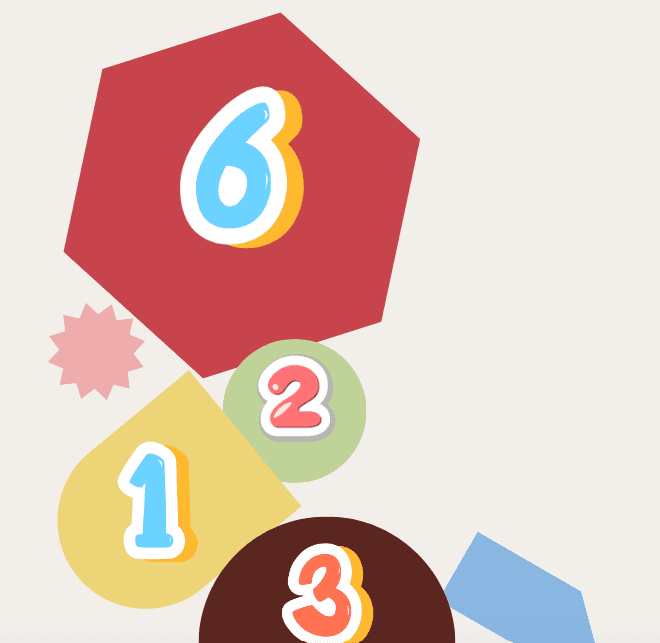
What is Number
Understanding Numbers
What is a Numbers ?
A number is a mathematical object used to count, measure, and label. Numbers can be classified in various types such as natural numbers, integers, rational numbers, and real numbers, among others. Each type of number has specific properties and uses in mathematics and everyday life.
Vocabulary
count : konte
measure: mezire
Label: Met etikèt
To Count Pou Konte

Math is important because it helps us count and understand numbers. When we know how to count, we can figure out how many things we have, like marbles, ball, or candies. Math also helps us solve problems, like how much money we need to buy something or how long it will take to get somewhere. By learning math, we can do everyday tasks more easily and make better decisions.
Example
- Konbye soley ki genyen?
- How many sun are there?
- Genyen yon sèl solèy.
- The is one sun.
- men gen 7 planè.
- However there are 7 plants
Vocabulary
count : konte
measure: mezire
Label: Met etikèt
To Measure Pou Mezire
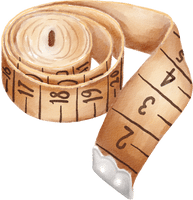
Math is used to measure things to know how big, long, or heavy they are. For example, we use math to measure the length of a table in inches or centimeters, the weight of a fruit in pounds or kilograms, and the amount of liquid in a bottle in liters or gallons. Measuring helps us understand the size and quantity of objects in our daily lives.
Example
Ki mezi w?
What is your size.
Mwen se yon medyòm.
I am a mediuon.
Mizi m se 60 cm nasn ren m.
I measure 60 inches aroun the waist.
Vocabulary
mezire : to measure
mezi : size, fit,
To Label Pou Mete Etikè
Math is used to label things to show their order or position. For example, in a race, the runners are labeled as 1st, 2nd, 3rd, and so on, to show who finished in what place. Another example is the floors in a building, labeled as 1st floor, 2nd floor, 3rd floor, and so on, to help people find where they need to go.
Exemple
- Ki plas ou pran?
- where did you rank?
- Nan ki etaj ou ye?
- In which floor do you live
- Mwen nan premye etaj.
- I am on the first floor.
Vocabulary
count : konte
plas: order, rank
etaj : floor
pran place : To rank
Positive Numbers? Nonm Pozitig
A positive number is any number greater than zero, without a negative sign in front of it. These numbers represent quantities that increase or exist above a zero point, such as money earned, temperature above zero, or elevation above sea level.
Nagative Numbers ?
EA negative number is a number that is less than zero, represented by a minus sign (-) in front of the number. These numbers are used to describe values on a scale that goes below zero, like temperatures below freezing, depths below sea level, or losses in finances. Negative numbers are essential in mathematics for performing operations that involve decreasing quantities or reversing directions, such as subtracting a larger number from a smaller one. They are fundamental in various real-world contexts and in many fields of study, including economics, engineering, and physics.
Positive Numbers? Nonm Pozitig
A negative number is a number that is less than zero, represented by a minus sign (-) in front of the number. These numbers are used to describe values on a scale that goes below zero, like temperatures below freezing, depths below sea level, or losses in finances. Negative numbers are essential in mathematics for performing operations that involve decreasing quantities or reversing directions, such as subtracting a larger number from a smaller one. They are fundamental in various real-world contexts and in many fields of study, including economics, engineering, and physics.
Nagative Numbers ?
Types of Numbers ?
1. Natural Numbers: Nonm Natirèl
These start at 1 and go upward—1, 2, 3, and so on. They include only the positive integers and exclude zero and any negatives.
2. Whole Numbers: Nonm Antye
These comprise all the natural numbers plus zero, giving us a set that starts from 0, 1, 2, 3, and continues indefinitely.
3. Integers: Antye
This set includes all the whole numbers along with their negative counterparts. So, it spans from negative infinity, crosses zero, and goes on to positive infinity.

4. Rational Numbers: Nonm Rasyonèl
These are numbers that you can write as a fraction or ratio of two integers, with the caveat that the denominator can’t be zero.
For instance, 1/2, -3/4, and even 7 (as 7/1) are all rational.
vocabulary
fraction : fraksyon
numerator: nimeratè
denominator: denominatè
rational: rasyonèl
5. Irrational Numbers: Nonm Irasyonèl
These are numbers that don’t fit neatly into a simple fraction. Their decimal expansions are non-terminating and non-repeating. Notable examples include π (pi) and √2.
vocabulary
π : Pi
√: rasin kare
6. Real Numbers: Nonm Reyèl
Encompassing both rational and irrational numbers, this set includes every possible decimal value, but it does not venture into imaginary or complex components.
7. Complex Numbers: Nonm Konpleks
Incorporating a real and an imaginary part, these numbers are expressed in the form of a + bi, where “a” and “b” are real numbers, and “i” represents the square root of -1. This form is indispensable in more advanced realms of mathematics and various engineering disciplines.
Each category of numbers is either inclusive of or a distinct extension of another, broadening the scope for numerical applications in everyday computations, the sciences, engineering, and beyond.
Imaginary Numbers ?
Imaginary numbers are a concept in mathematics used to extend the real numbers and deal with s represented by \(i\), where \(i\) is defined as:
\[ i = \sqrt{-1} \]
Using \(i\), any imaginary number can be expressed as \(bi\), where \(b\) is a real number. For example, \(5i\) or \(-3i\) are imaginary numbers.
Imaginary numbers, when combined with real numbers, form complex numbers, which are expressed in the form \(a + bi\), where \(a\) is the real part and \(bi\) is the imaginary part. Complex numbers are fundamental in various fields of science and engineering, especially in signal processing and electrical engineering.
Why Learn Haitian Creole Numbers ?
Pouki N Dwe Aprann NOnm an Kreyòl
Sure, diving into Haitian numbers isn’t just about adding some linguistic flair to your repertoire—it’s practically a survival skill if you ever find yourself in a Haitian market haggling over prices! Imagine confidently countering a price, only to realize you’ve just bargained up instead of down. Oops! Plus, it’s a great party trick to dazzle friends with your counting skills, all while casually dropping tidbits about Haitian culture. And who knows? Mastering those numbers might just be your first step to becoming an honorary Haitian at the next big family gathering. So, why not learn? It’s all in the numbers, after all!
Monday
Tuesday
Wednesday
Thursday
Friday
Saturday
Sunday
Months of the Year
January
February
March
April
May
June
July
August
September
October
November
December
What is today’s weather?

rainy

sunny

windy

stormy

cloudy

snowy
What comes next?




















What time is it?

O'clock
Time Presentation


